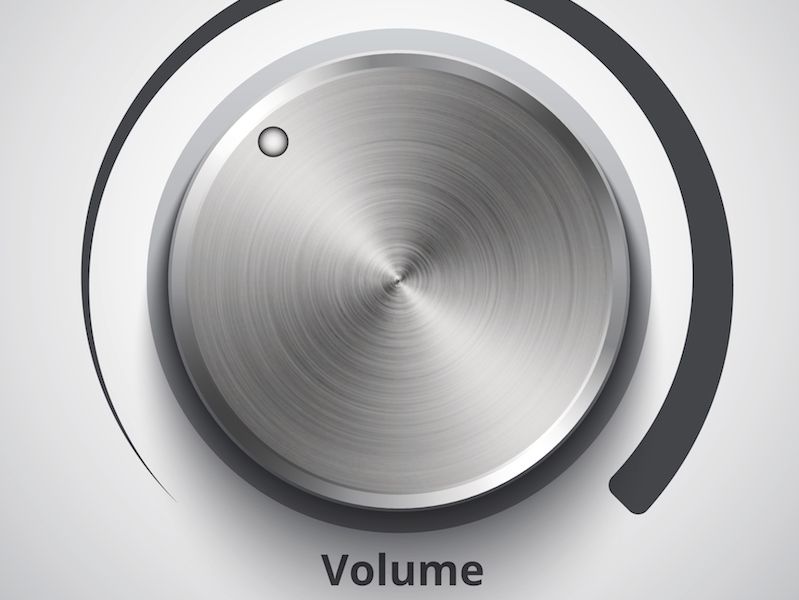Have you ever noticed the “Beware of Sharks” sign when you go to the ocean? It’s easy to realize that you should never dismiss a warning like that. You might even reconsider swimming at all with a sign like that (if the warning is written in big red letters that’s especially true). Inexplicably, though, it’s more challenging for people to heed warnings about their hearing in the same way.
Current studies have found that millions of individuals disregard warning signs when it comes to their hearing (there’s little doubt that this is a global problem, though these studies were exclusively done in the United Kingdom). Knowledge is a big part of the problem. It’s rather intuitive to be fearful of sharks. But fear of loud noise? And the real question is, what’s too loud?
Loud And Dangerous Sound is Everywhere Around us
Your ears are not just in peril at a live concert or on the floor of a machine shop (although both of those situations are, indeed, hazardous to your hearing). There are potential hazards with many common sounds. That’s because it isn’t exclusively the volume of a sound that presents a danger; it’s also how long you’re exposed. Your hearing can be harmed with even low level sounds like dense city traffic if you experience it for more than two hours at a time.
Generally speaking, here’s a rough outline of when loud becomes too loud:
- 30 dB: Everyday conversation would be at this sound level. You should be just fine at this volume for an indefinite length of time.
- 80 – 85 dB: An air conditioner, dense traffic, and a lawnmower are at this level of sound. This volume will usually become dangerous after two hours of exposure.
- 90 – 95 dB: Think of the noisiness of a motorcycle. 50 minutes is enough to be harmful at this volume.
- 100 dB: An approaching subway train or a mid-sized sports event are at this volume (of course, this depends on the city). 15 minutes of exposure will be enough to be unsafe at this volume.
- 110 dB: Do you ever turn the volume on your earpods up to max? That’s usually around this sound level on most smartphones. This amount of exposure is dangerous after only 5 minutes of exposure.
- 120 dB and over: Instant pain and damage can happen at or above this level (think about an arena sized sports event or rock concert).
How Loud is 85 Decibels?
In general, you’re hearing is in peril when you’re dealing with any sound 85 dB or higher. But it can be difficult to know how loud 85 dB is and that’s the issue. It’s not tangible in the way that a shark is tangible.
And that’s one of the reasons why hearing cautions frequently go neglected, when the sound environment isn’t loud enough to cause pain, this is especially true. Here are a couple of possible solutions:
- Suitable training and signage: This particularly pertains to workspaces. The real dangers of hearing loss can be reinforced by signage and training (and the benefits of hearing protection). In addition, just how loud your workspace is, can be clarified by signage. Training can help employees know when hearing protection is needed or suggested.
- Download an app: Your ears can’t be directly protected with an app. But there are several sound level metering apps. Injury to your ears can occur without you recognizing it because it’s hard to know just how loud 85 dB feels. The answer, then, is to have this app open and monitor the sound levels around you. This will help you develop a sense for when you’re entering the “danger zone” (Or, the app will simply alert you to when things get too noisy).
When in Doubt: Protect
Signage and apps aren’t a foolproof solution. So if you’re in doubt, take the time to safeguard your hearing. Over a long enough duration, noise damage will almost certainly create hearing issues. And nowadays, it’s never been easier to harm your ears (all you have to do is turn your headphone volume up a little too loud).
You shouldn’t increase the volume past mid way, specifically if you’re listening all day. If you keep turning it up to hear your music over background sound you should find different headphones that can block out noise.
That’s why it’s more essential than ever to recognize when the volume becomes too loud. And to do that, you need to increase your own recognition and knowledge level. Safeguarding your ears, wearing ear protection, or reducing your exposure, is not that difficult. But you have to recognize when to do it.
That should be easier today, too. That’s even more true now that you have some insight.
Think you could have hearing loss? Make an appointment.




